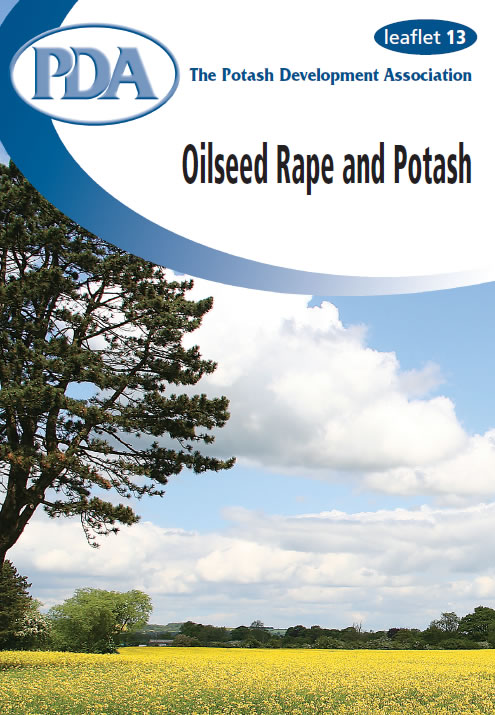Potash for oilseed rape
August 2021
With oilseed rape prices reaching well over £500/t before bonuses, the market appears to be telling growers to plant more of the crop. This, combined with the generally lower pressure across the country from flea beetle last autumn and some respectable yields being recorded this harvest, suggests more growers may turn back to this one-time favourite combinable break crop for harvest 2022.
There have been many discussions over the last two years of how to grow the crop on the cheap in case of crop failure, and although it is easy to understand the thinking behind this, as Henry Ford once said “Whether you think you can or whether you think you can’t, you’re right”. It is therefore important to give the crop the best possible start to maximise the chances of success, and part of this will be ensuring the soil is in the best possible state – well structured, with sufficient moisture for rapid germination and emergence, correct pH and phosphate and potash levels at the target index of 2 and 2- respectively.
There have been reports across UK and Europe of disappointing yields and quality in cereals so far this harvest, with the wet weather and lack of sunshine in the last few months leading to greater straw development at the expense of grain fill. Where straw is removed from fields, and especially where yields are higher than normal, large amounts of potash are taken off as well, which will need to be replenished within the rotation. If this is prior to an OSR crop then it is better not to wait too long as OSR has a very high demand for potash, especially in the spring.
Potassium levels in the establishing plant are quite high at 3 – 4% and although the total bulk of the crop is fairly small, there will be around 60-75 kg/ha of potash in the crop by the end of autumn. Some forward crops have been found with levels of over 100 kg/ha by November. The rate of growth and uptake requirement of oilseed rape plants in the spring is dramatic. Potash demand maybe in excess of 12 kg/ha/day. Where conditions for growth are not ideal (poor soil structure, thin soils, very wet or dry conditions etc.) the plant may not be able to extract its full needs even though the total quantity in the soil is theoretically sufficient. Continental fertiliser recommendations tend to be more generous than in the UK in order to ensure that the peak supply is adequate for optimum potential growth and yield. As with cereals, a spring top-dressing with an NK fertiliser will be worthwhile if the K available from soil reserves is insufficient.
Many input prices have risen recently, with all sorts of reasons offered, but serious consideration should be given to the major inputs for this crop so not to limit yield potential or crop viability before it is even out of the ground.


